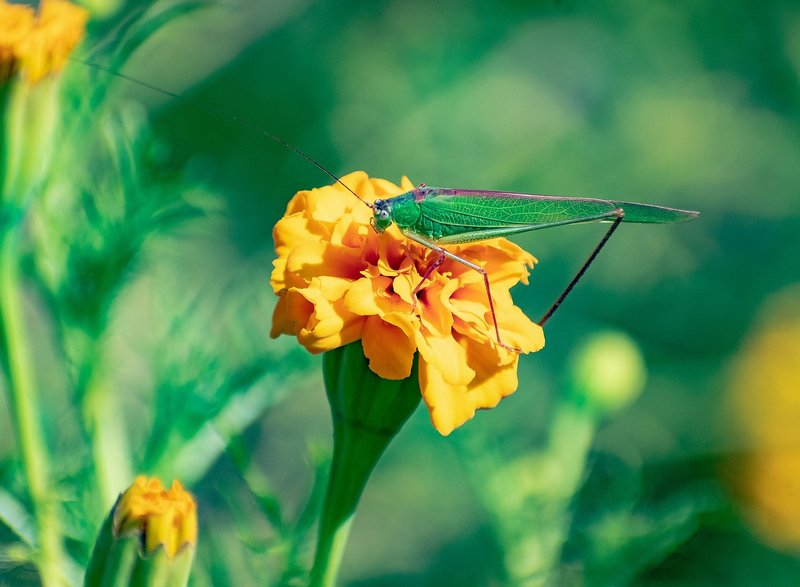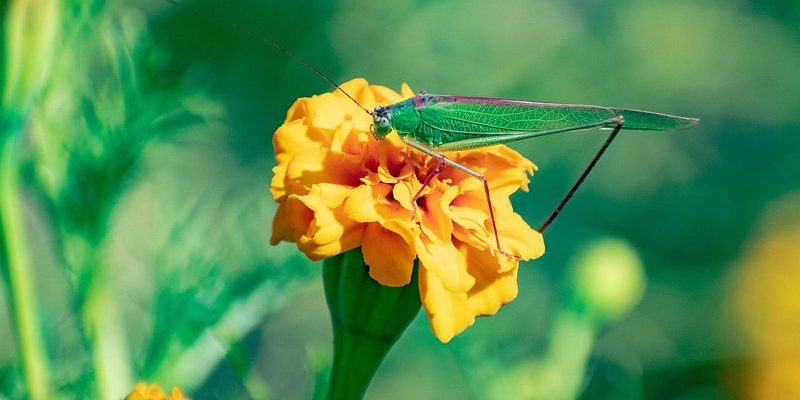
So, how does a creature often associated with dried-up fields and grassy knolls contribute to the cycle of life through pollination? And what other roles do they play? Let’s dive into the fascinating world of grasshoppers and explore how they contribute to their ecosystems, helping plants grow and thrive, while also juggling other surprising tasks. Grab your favorite drink, and let’s chat about these hopping helpers!
Understanding Grasshopper Pollination
Grasshoppers are primarily known for their role as herbivores, but they occasionally step into the spotlight as pollinators. While they aren’t as famous as bees or butterflies, grasshoppers can contribute to the pollination process. Imagine a garden full of flowers—each bloom a perfect host for insects. Pollination is like sending out invitations to the plants, ensuring that their seeds get spread and new plants can grow.
You might be wondering how grasshoppers pollinate. They don’t fly from flower to flower like bees; instead, they typically visit plants while munching on leaves and stems. When they snack on flowering plants, pollen sticks to their bodies and transfers to other blooms. So, while they’re busy having lunch, they’re also giving plants a helping hand in reproduction.
It’s important to note that grasshoppers are not the most efficient pollinators. Their contribution is more of a happy accident than an active choice. They primarily munch on grasses, while only occasionally visiting flowering plants. Nevertheless, this unintentional pollination can still aid in the plant’s lifecycle, showcasing the interconnectedness of nature.
The Role of Grasshoppers in the Food Chain
Grasshoppers are not just passive players in the ecosystem; they are vital links in the food chain. They serve as a major food source for many animals, including birds, mammals, and reptiles. Think of them as nature’s version of a fast-food drive-through. When other animals need a quick meal, grasshoppers are there, hopping right into the menu.
This role is crucial for maintaining balance in the ecosystem. If grasshopper populations were to decline, the predators that rely on them for food would struggle to survive. This could lead to a ripple effect, disrupting the entire food web. Just like how your favorite café’s sudden closure can change your lunchtime routine, grasshoppers provide essential sustenance for many other creatures.
Interestingly, grasshoppers also help control plant growth. By munching on various plants, they can prevent any single species from taking over an area, promoting biodiversity. In a way, grasshoppers act like tiny gardeners, trimming back overgrowth and allowing diverse plant species to thrive.
Soil Health and Nutrient Cycling
Another surprising job that grasshoppers take on is improving soil health. When they feed on plant matter, they break it down into smaller pieces. This action ultimately contributes to the nutrient cycling in the soil. Imagine a compost pile: as the grasshoppers eat, they help create organic matter that enriches the ground.
When these insects droppings—called frass—are left behind, they enrich the soil with nutrients. This process can help support the growth of healthy plants and promote a vibrant ecosystem. It’s like they’re leaving behind little gifts for the earth, enhancing the soil’s fertility for future generations of plants.
Furthermore, grasshoppers often burrow into the ground while feeding or moving. This burrowing helps aerate the soil, allowing water and nutrients to penetrate deeper. This means better access for plant roots, ultimately leading to healthier vegetation. It’s a team effort in the underground world, where every little action counts!
Grasshoppers as Indicators of Environmental Health
Grasshoppers can also serve as indicators of environmental health. Their presence—or absence—can tell us a lot about the ecosystem they inhabit. For instance, areas with high grasshopper populations often indicate healthy vegetation and balanced ecosystems. If you see plenty of grasshoppers, it’s a sign that the environment is thriving.
On the flip side, a sudden decline in grasshopper numbers might signal problems. It could mean overuse of pesticides, habitat destruction, or changes in climate. Researchers often look at grasshopper populations when studying environmental changes, making them valuable allies in environmental monitoring. They act much like the canary in the coal mine, hinting when something is amiss.
This aspect of their life speaks to the interconnectedness of all species. The health of grasshoppers often reflects the health of the broader ecosystem. When we protect these little creatures, we’re, in turn, safeguarding the environment they help support.
Grasshopper Adaptations and Survival Strategies
Grasshoppers have developed various adaptations that allow them to thrive in their environments. Their strong back legs enable them to jump impressive distances, helping them escape predators quickly. You could say they’ve mastered the art of hopping away from trouble!
Additionally, their ability to blend into their surroundings is remarkable. Many grasshoppers have colors and patterns that mimic the plants they live in. This camouflage can be an effective survival strategy, allowing them to avoid becoming a meal for hungry birds. It’s like wearing an invisibility cloak during a game of hide and seek!
Another fascinating aspect of grasshopper life is their social behavior. While many grasshoppers are solitary, some species band together, forming swarms. These swarms can travel long distances in search of food, drastically affecting their local environment. When they swarm, their collective feeding can reshape landscapes, making them powerful agents of change.
Grasshopper Conservation: Why It Matters
Given the roles grasshoppers play in our ecosystems, their conservation is essential. As many habitats face destruction from urban development and agricultural expansion, grasshopper populations are increasingly at risk. Protecting these creatures is vital for maintaining biodiversity and ensuring the health of ecosystems.
Conservation efforts can include creating natural habitats that support grasshopper populations. This might involve planting native plants that provide food and shelter, reducing pesticide use, and promoting sustainable farming practices. Just like protecting a community garden can lead to healthier plants, safeguarding grasshopper habitats helps ensure a thriving ecosystem.
Additionally, educating the public about the importance of grasshoppers and their roles can encourage positive actions. When people understand the contributions of these little creatures, they’re more likely to advocate for their protection. After all, everyone loves a jumping friend!
So, there you have it! Grasshoppers are more than just hopping insects. They play essential roles in pollination, serve as crucial links in the food chain, enhance soil health, and even help monitor environmental conditions. By appreciating and protecting these little creatures, we can support the broader health of our ecosystems.
Let’s celebrate the unsung heroes of the grasslands and fields! Each grasshopper contributes to the delicate balance of nature, reminding us of the interconnectedness of all life forms. So the next time you see a grasshopper leaping through the air, take a moment to consider all the important jobs they’ve got—it’s more than just jumping around!

